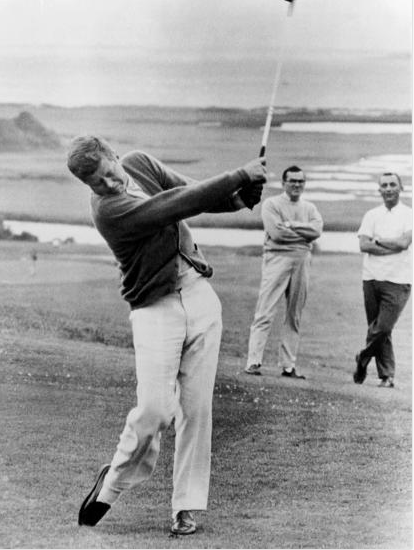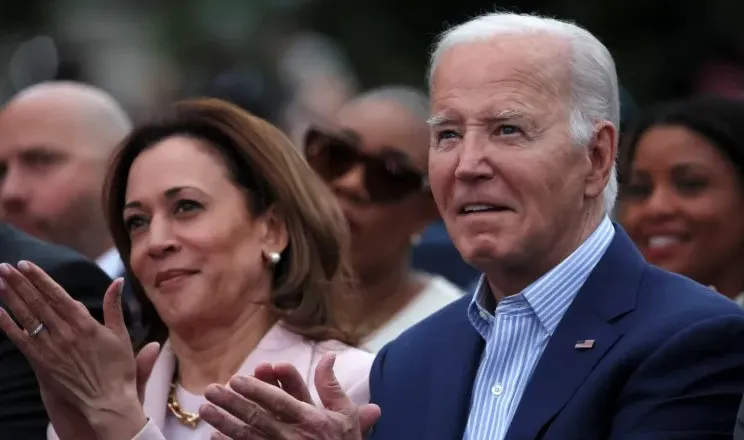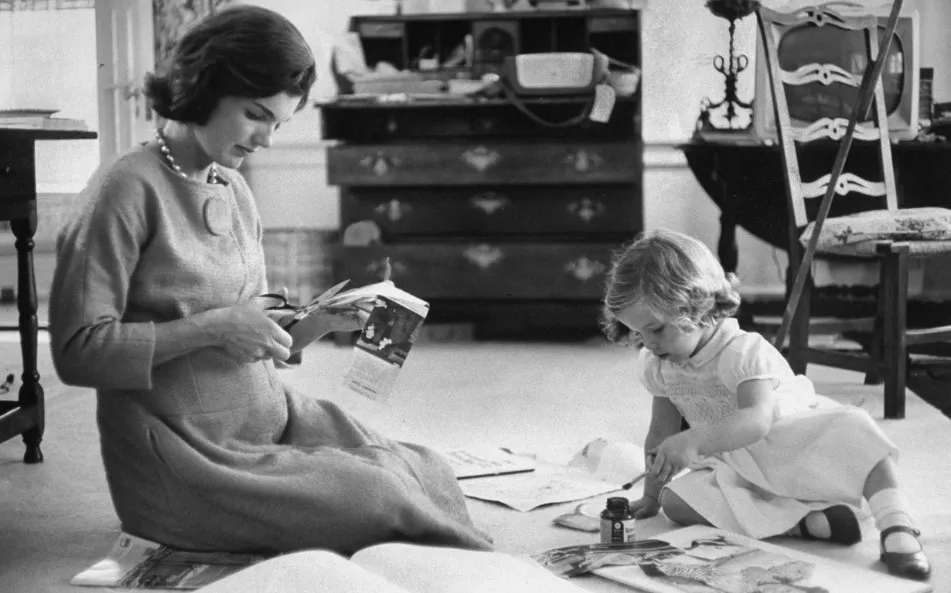John F. Kennedy, the 35th President of the United States, is often remembered for his charisma, his leadership during the Cuban Missile Crisis, and his vision for a "New Frontier" in American politics. However, one lesser-known aspect of his presidency involves his moments of relaxation and leisure, particularly his time spent in golf carts.

For JFK, the golf cart was more than just a mode of transportation; it was a symbol of his approach to relaxation, a way to connect with others, and a glimpse into the life of a man who knew the importance of balancing work with moments of respite.
The Importance of Relaxation for JFK

John F. Kennedy's presidency was marked by intense pressure and high-stakes decision-making. From navigating the Cold War to advancing civil rights, JFK faced challenges that required constant attention and mental fortitude.
Despite his youthful energy and enthusiasm, Kennedy also battled chronic health issues, including severe back pain and Addison's disease, which made the demands of the presidency even more taxing.
Amidst the whirlwind of his political responsibilities, JFK understood the importance of relaxation and physical activity as a means of recharging. He was an avid sportsman who enjoyed sailing, swimming, and touch football, but golf became one of his favorite ways to unwind.

Although he never publicly embraced the image of being an avid golfer (in contrast to President Dwight D. Eisenhower, who famously loved the game), Kennedy did enjoy the occasional round of golf.
For JFK, relaxation wasn't just about personal enjoyment—it was a strategic way to maintain his health and mental clarity.
His time on the golf course, often accompanied by his trusty golf cart, allowed him to momentarily step away from the demands of the Oval Office and enjoy moments of calm and reflection.
The Golf Cart as a Symbol of Kennedy's Approach to Leisure

Golf carts were a common sight on golf courses across America, and for JFK, they became a useful tool for navigating the green. Due to his back problems, walking long distances was often difficult for him.
The golf cart allowed him to participate in the sport he enjoyed without exacerbating his pain, enabling him to stay active and engaged in physical exercise.
However, the golf cart was more than just a practical necessity for Kennedy. It also represented his desire to maintain a sense of normalcy and accessibility amidst the trappings of the presidency.
Unlike the grandeur of presidential limousines or the imposing presence of Air Force One, the golf cart was a simple, unpretentious vehicle that symbolized leisure, camaraderie, and relaxation.

JFK's use of the golf cart also provided a unique window into his personality. Known for his charm and sociability, Kennedy often used his time on the golf course and in the golf cart to build relationships with friends, political allies, and even adversaries.
The informal setting of the golf course allowed him to engage in candid conversations, free from the constraints of the political arena.
The golf cart, in this context, became a mobile office of sorts—an extension of JFK's ability to connect with others and influence through personal rapport.
Kennedy's Time on the Golf Course: A Balance Between Work and Play

Although JFK's golf outings were relatively infrequent compared to some of his predecessors, they were nonetheless significant moments in his presidency.
His time on the golf course allowed him to temporarily escape the pressures of the White House while still engaging in strategic thinking and relationship-building.
One famous example of JFK's use of golf as a diplomatic tool was his time spent with British Prime Minister Harold Macmillan during a visit to the United States. The two leaders played golf together at Augusta National Golf Club, and the informal setting allowed them to discuss important issues in a relaxed environment.

The golf cart, in this case, served as a vessel for dialogue, facilitating a connection between two world leaders who were navigating the complexities of the Cold War.
Beyond the diplomatic benefits, Kennedy's time in the golf cart also highlighted his ability to balance work with play.
In an era when the pressures of the presidency were immense, JFK's moments of leisure were not just about relaxation—they were about finding a sustainable rhythm between the demands of leadership and the need for personal well-being.
The golf cart, in this context, became a symbol of that balance, allowing Kennedy to remain active and engaged while also taking care of his health.
The Public Perception of Kennedy and Golf

Unlike President Eisenhower, who was often associated with golf and even had a putting green installed on the White House lawn, JFK's relationship with golf was more understated. He did not publicly embrace the image of being a golfer, likely due to the political optics of the time.
In the early 1960s, golf was often seen as a leisure activity associated with the wealthy elite, and Kennedy was mindful of projecting an image that resonated with average Americans.
Despite this, JFK's occasional golf outings did not go unnoticed by the media and the public. Photographs of Kennedy in a golf cart or on the green provided a glimpse into the more personal, human side of the president.

These images contrasted with the often-serious demeanor he displayed during press conferences and public appearances, reminding Americans that their president, too, needed moments of respite.
While JFK may not have been as publicly associated with golf as some of his predecessors, his time on the golf course, aided by the golf cart, contributed to the public's understanding of him as a multifaceted leader.
He was a man who could navigate the complexities of global politics while also appreciating the importance of a well-earned break.
The Legacy of JFK's Approach to Leisure

John F. Kennedy's presidency was cut tragically short in November 1963, but his approach to leadership and leisure left a lasting impact. In many ways, JFK's use of the golf cart symbolized his ability to find moments of relaxation and connection amidst the demands of the presidency.
His time spent in the golf cart, whether during a casual round of golf or in conversation with world leaders, reflected his belief in the importance of balance—both for himself and for the nation he led.
Today, the image of JFK in a golf cart serves as a reminder of the human side of leadership. It highlights the importance of self-care, even for those in the highest positions of power, and underscores the value of finding time for leisure in a world that often prioritizes constant work.

For JFK, the golf cart was more than just a mode of transportation—it was a symbol of his approach to life, leadership, and the pursuit of well-being.
In the years since JFK's presidency, the role of leisure in the lives of leaders has continued to evolve. However, the lessons from Kennedy's time in the golf cart remain relevant.
In an age where work-life balance is increasingly emphasized, JFK's example serves as a testament to the idea that even the most powerful individuals need moments of relaxation and recreation to thrive.
JFK's Golf Cart as a Symbol of Balance and Connection

John F. Kennedy's road to the presidency was filled with challenges and triumphs, and his time in office was marked by significant achievements and intense pressures.
Yet, amidst it all, he found moments of solace and connection through simple activities like golf, often with the aid of a golf cart.
The golf cart, in its own way, represents a facet of Kennedy's leadership that often goes unnoticed—a commitment to balance, health, and human connection.
As we look back on JFK's presidency, it is worth remembering that even the most iconic leaders need time to relax and recharge.
For Kennedy, the golf cart was more than just a vehicle—it was a symbol of his approach to navigating the complexities of life, leadership, and leisure.



